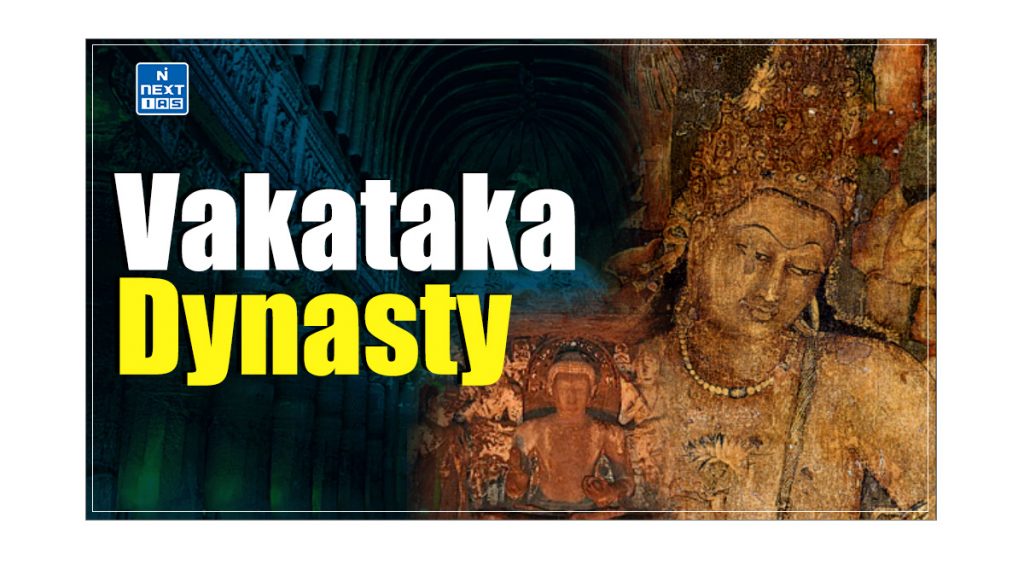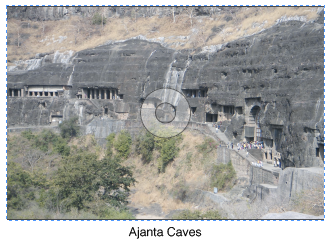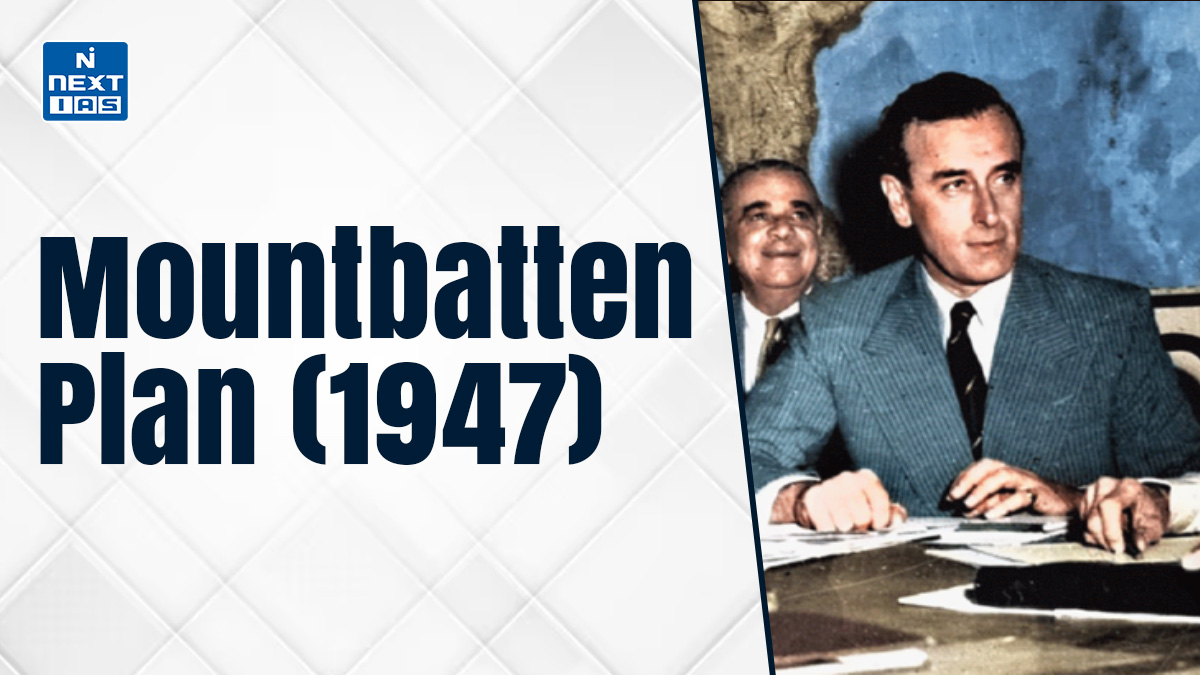
The Vakataka Dynasty was an influential ruling dynasty that emerged in the Deccan region around the 3rd century CE, succeeding the Satavahanas. Their reign is significant for fostering cultural and political ties with the Gupta Empire and patronising the Ajanta Caves, contributing greatly to India’s art and architecture. This article aims to study in detail the origins, geographical extent, rulers, cultural contributions, and eventual decline of the Vakataka Dynasty.
About Vakatakas Dynasty
- The Vakataka Dynasty was one of the principal dynasties that rose to prominence in the Deccan region around the 3rd century CE.
- The Vakatakas ruled from the 3rd to the 5th century CE and significantly shaped India’s political and cultural landscape.
- They were successors to the Satavahanas and contemporaries of the Gupta Empire, establishing important connections through political and marital alliances.
- The Vakataka Empire extended from the southern edges of Malwa and Gujarat in the north to the Tungabhadra River in the south and from the Arabian Sea in the west to the borders of Chhattisgarh in the east.
- Their rule influenced the Deccan region and contributed significantly to the development of Indian art and architecture, particularly in their support for the Ajanta Caves.
Geographical Extent of Vakatakas Empire
- The Vakataka Empire controlled a vast region encompassing parts of Central India and the Deccan.
- Their empire stretched from the southern edges of Malwa and Gujarat in the north to the Tungabhadra River in the south, covering a significant portion of the Indian subcontinent.
- On the western side, the empire extended to the Arabian Sea, while in the east, it reached the borders of present-day Chhattisgarh.
Founder of Vakataka Dynasty
- The founder of Vakataka dynasty is credited to Vindhyashakti, though little information is available about him.
- Inscriptions of Ajanta mention about the founder of Vakataka dynasty as an outstanding warrior of his time and the dynasty’s founder.
- The first significant ruler of the dynasty was Pravarsena I, the first Vakataka king to claim the title of ‘Samrat’.
- Pravarsena I expanded the empire by winning battles with the Naga King in the north, extending his rule over a large portion of northern India.
- The inscription on the Allahabad Pillar mentions Rudrasena I, another important ruler who was succeeded by Prithvisena I.
Branches of Vakatakas Dynasty
After Pravarsena I’s reign, the Vakataka dynasty was divided into four branches. The two prominent ones were the Pravarpura-Nandivardhana Branch and the Vatsagulma Branch. These branches played a crucial role in shaping the dynasty’s later history.
Pravarpura-Nandivardhana Branch
- Rudrasena II (380-385 AD): Ruler of the Pravarpura-Nandivardhana branch, Rudrasena II entered into a marital alliance with Prabhavatigupta, the daughter of the Gupta King Chandragupta II (375-415 AD).
- This alliance marked a significant connection between the Vakatakas and the Gupta Empire.
- Prabhavatigupta (385–405 AD): After the death of Rudrasena II, Prabhavatigupta ruled as a regent on behalf of her two sons, Divakarasena and Damodarasena (Pravarsena II), for 20 years.
- Pravarsena II: One of the most important rulers of this branch, Pravarsena II, shifted the capital from Nandivardhana to Pravarapura, a new city he founded.
- His reign is responsible for the maximum number of copper plate inscriptions discovered from the Vakataka period.
- Prithvisena II: The last known king of this branch, after whose death Harisena, the ruler of the Vatsagulma branch, likely annexed the kingdom.
- Following the Vakataka power’s decline, Badami’s Chalukyas rose to prominence in the Deccan region.
Vatsagulma Branch
- Sarvasena: The Vatsagulma branch was founded by Sarvasena, the second son of Pravarsena I.
- Pravarasena II (400–415 AD): A prominent ruler of this branch, Pravarasena II is praised in the Cave XVI inscription of Ajanta for his excellent, powerful, and liberal rule.
- Harishena (475–500 AD): One of the most illustrious rulers of the Vatsagulma branch, Harishena was a great patron of Buddhist art, architecture, and culture.
- The Ajanta Caves, known for their magnificent Buddhist rock-cut architecture, flourished under his rule.
- The inscriptions at Ajanta mention that Harishena is credited with conquering Avanti, Kosala, Kalinga, Andhra, and other regions.

Capital of Vakatakas Dynasty
- The capital of the Vakataka Dynasty was initially located at Nandivardhana (near modern-day Nagpur), but later, Pravarapura (likely modern-day Paunar) became their seat of power.
- Other important cities included Vatsagulma (modern-day Washim), the capital of the Vatsagulma branch of the dynasty, and Ajanta, famous for its caves, which were patronised by the Vakatakas.

Contributions of Vaktataka Dynasty
- Vakatakas are renowned for being enthusiastic patrons of the arts, architecture, and literature.
- Their public works and monuments are their visible legacy.
- The rock-cut Buddhist viharas and chaityas of Ajanta Caves were built under the patronage of Vakataka King Harishena of the Vatsagulma branch.
- The Vakatakas also played a key role in promoting Sanskrit literature and learning.
- They maintained close cultural and political ties with the Gupta dynasty, which helped classical art and culture flourish during their reign.
- Additionally, they were known for constructing temples and other architectural marvels that reflect their skill and dedication to religious art.
- Their contributions significantly influenced the development of Deccan architecture and had a lasting impact on India’s cultural landscape.
End of Vakatakas Dynasty
- According to Dasakumaracharita of Dandin, which was probably written around 125 years after the fall of the Vakataka dynasty, Harisena’s son, though intelligent and accomplished in all arts, neglected the study of administration and gave himself to luxuries.
- Finding this a suitable opportunity, the ruler of Ashmaka instigated the ruler of Vanavasi to invade the Vakataka territory.
- The King called all his feudatories and decided to fight his enemy on the bank of the Varada.
- While fighting, he was treacherously attacked in the rear by some of his own feudatories and killed. His death ended the Vakataka dynasty.
Conclusion
The Vakataka Dynasty is a significant force in India’s early medieval history, not only for its political achievements but also for its profound contributions to art and culture, particularly in the Deccan region. The dynasty’s association with the Ajanta Caves and its promotion of Sanskrit literature mark it as an era of cultural and artistic flourishing. Despite their eventual decline due to internal strife and external invasions, the Vakatakas’ legacy, especially under rulers like Harishena, continues to influence India’s architectural and cultural fabric. The dynasty’s decline, however, paved the way for the rise of the Chalukyas, marking a new phase in Deccan history.
Frequently Asked Questions (FAQs)
Who was the founder of the Vakataka dynasty?
Vindhyashakti was the founder of the Vakataka dynasty.
Who was the greatest ruler of the Vakataka dynasty?
Pravarasena I is considered the greatest ruler of the Vakataka dynasty.





